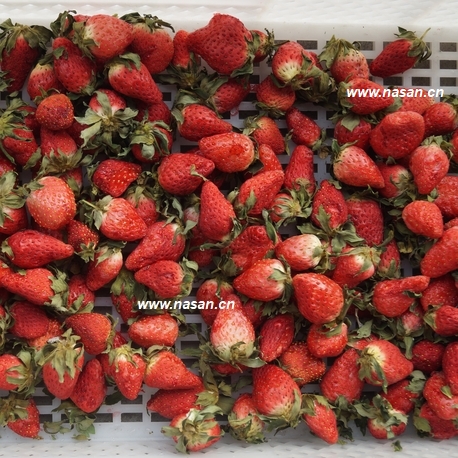In recent years, fruit dry has gained immense popularity as a convenient and nutritious snack option. Whether you're looking for a quick energy boost, a healthy addition to your meals, or a way to reduce food waste, fruit dry offers a versatile solution. But what exactly is fruit dry, and why should you consider incorporating it into your daily routine? This article delves into five key aspects of fruit dry, providing a comprehensive overview that covers its definition, health advantages, production methods, culinary uses, and storage tips. By the end, you'll have a clear understanding of how fruit dry can fit into your lifestyle, along with answers to common questions that might arise.
Fruit dry, often referred to as dried fruit, is simply fresh fruit that has had the majority of its water content removed through various drying methods. This process concentrates the fruit's natural sugars, flavors, and nutrients, resulting in a shelf-stable product that retains much of its original nutritional value. From raisins and apricots to more exotic options like dried mangoes or berries, fruit dry comes in a wide array of types, each offering unique tastes and benefits. As we explore the multifaceted world of fruit dry, you'll discover why it's more than just a tasty treat—it's a powerhouse of nutrition and convenience that can enhance your overall well-being. Let's dive into the details and uncover the secrets behind this beloved snack.

What is Fruit Dry and How Is It Different from Fresh Fruit?
Fruit dry is essentially fresh fruit that has undergone a dehydration process to remove most of its moisture, which helps preserve it for longer periods. This transformation not only extends the shelf life but also intensifies the fruit's natural sweetness and flavor. Common examples include dried apples, dates, and figs, which are widely available in supermarkets and health food stores. The key difference between fruit dry and fresh fruit lies in their water content; fresh fruit typically contains over 80% water, while fruit dry has less than 20%. This reduction makes fruit dry more calorie-dense and nutrient-concentrated, meaning you get a higher amount of vitamins, minerals, and fiber per serving compared to fresh fruit. However, it's important to note that some water-soluble vitamins, like vitamin C, may be reduced during the drying process. Despite this, fruit dry remains a valuable part of a balanced diet, especially for those seeking portable, non-perishable snack options. By understanding what fruit dry is, you can make informed choices about when and how to enjoy it, whether as a standalone snack or an ingredient in various recipes.
Health Benefits of Incorporating Fruit Dry into Your Diet
One of the most compelling reasons to include fruit dry in your diet is its impressive array of health benefits. Rich in essential nutrients, fruit dry can support everything from digestive health to immune function. For instance, many types of fruit dry are high in dietary fiber, which aids in digestion, prevents constipation, and promotes a feeling of fullness—helping with weight management. Additionally, fruit dry is packed with antioxidants, such as polyphenols, which combat oxidative stress and reduce the risk of chronic diseases like heart disease and cancer. The concentrated nature of fruit dry also means it provides a quick source of energy, making it an excellent choice for athletes or anyone needing a mid-day pick-me-up. Moreover, certain varieties, like dried apricots or prunes, are rich in iron and potassium, which support blood health and muscle function. However, moderation is key, as the high sugar content in some fruit dry products can lead to calorie overload if consumed in excess. By choosing unsweetened versions and balancing intake, you can reap the benefits of fruit dry without the drawbacks. Overall, adding a serving of fruit dry to your daily routine can contribute to a healthier, more vibrant lifestyle.
How Is Fruit Dry Produced? A Look at the Drying Methods
The production of fruit dry involves several methods that remove moisture while preserving the fruit's nutritional integrity. Understanding these processes can help you select high-quality products. The most common methods include sun-drying, air-drying, and using specialized dehydrators or ovens. Sun-drying is a traditional approach where fruit is laid out in the sun for several days, allowing natural heat and airflow to evaporate the water. This method is often used for fruits like grapes to make raisins, but it requires dry, sunny climates and can be susceptible to contamination. Air-drying, on the other hand, uses controlled indoor environments with fans to circulate warm air, resulting in a more consistent product. For commercial production, dehydrators or freeze-drying are popular; dehydrators use low heat over extended periods to slowly remove moisture, while freeze-drying involves freezing the fruit and then reducing the surrounding pressure to sublimate the ice directly into vapor. This latter method retains most of the fruit's nutrients and flavor, making it a premium option. Regardless of the method, the goal is to achieve a moisture content below 20% to prevent spoilage. Some producers may add preservatives like sulfur dioxide to maintain color and extend shelf life, so it's wise to check labels if you have sensitivities. By knowing how fruit dry is made, you can appreciate the effort behind this simple snack and make choices that align with your health preferences.

Creative Ways to Use Fruit Dry in Everyday Cooking
Fruit dry isn't just for snacking—it's a versatile ingredient that can elevate a wide range of dishes. From breakfast to desserts, incorporating fruit dry into your meals adds natural sweetness, texture, and nutritional value. For example, you can mix chopped fruit dry into oatmeal, yogurt, or cereal for a flavorful start to your day. In baking, fruit dry like dried cranberries or raisins are staples in muffins, cookies, and breads, providing moisture and a burst of flavor. Salads benefit from the addition of fruit dry, such as dried cherries in a spinach salad, which pairs well with nuts and vinaigrette for a balanced meal. Savory dishes, like tagines or curries, often include dried apricots or dates to complement spices and create a rich, complex taste. Additionally, fruit dry can be blended into smoothies or used as a topping for ice cream and other desserts. For a healthy twist, try making your own trail mix by combining various types of fruit dry with nuts and seeds. The possibilities are endless, and experimenting with fruit dry in the kitchen can lead to delicious, nutrient-packed creations that the whole family will enjoy. By exploring these culinary uses, you can make fruit dry a staple in your pantry and discover new ways to enjoy its benefits.
Tips for Storing and Selecting High-Quality Fruit Dry
To get the most out of your fruit dry, it's essential to know how to select and store it properly. When buying fruit dry, look for products that are plump, vibrant in color, and free from added sugars or preservatives if you prefer a natural option. Organic varieties are available for those concerned about pesticides. Reading labels can help you avoid unwanted ingredients and ensure you're getting a pure product. Once you've purchased fruit dry, proper storage is crucial to maintain its freshness and prevent spoilage. Store it in an airtight container in a cool, dark place, such as a pantry or cupboard, to protect it from moisture and light. For longer-term storage, you can refrigerate or freeze fruit dry, which can extend its shelf life up to a year. Be sure to check for signs of mold or off odors periodically, as improper storage can lead to degradation. If your fruit dry becomes too hard, you can revive it by soaking it in warm water for a few minutes. By following these tips, you can enjoy your fruit dry at its best, whether you're using it in recipes or snacking on the go. This attention to detail ensures that your investment in fruit dry pays off with delicious, healthy results every time.
In conclusion, fruit dry is a multifaceted food that offers numerous benefits, from health advantages to culinary versatility. By understanding its production, uses, and storage, you can make the most of this convenient snack. Whether you're new to fruit dry or a longtime fan, there's always something new to learn and enjoy.
Frequently Asked Questions About Fruit Dry
Q1: What is the nutritional difference between fruit dry and fresh fruit?
A1: Fruit dry is more nutrient-dense than fresh fruit due to the removal of water, which concentrates vitamins, minerals, and fiber. However, some water-soluble vitamins like vitamin C may be reduced during drying. Fresh fruit has higher water content, making it less calorie-dense and more hydrating, but fruit dry offers a longer shelf life and portability.
Q2: Can fruit dry help with weight loss?
A2: Yes, in moderation, fruit dry can aid weight loss because it's high in fiber, which promotes satiety and reduces overeating. However, it's calorie-dense, so portion control is essential. Opt for unsweetened varieties to avoid excess sugar, and pair it with protein or healthy fats for a balanced snack.
Q3: How long does fruit dry typically last when stored properly?
A3: When stored in an airtight container in a cool, dark place, fruit dry can last for 6 to 12 months. Refrigeration or freezing can extend this to up to 18 months. Always check for signs of spoilage, such as mold or unusual odors, before consuming.
Q4: Are there any risks associated with consuming fruit dry?
A4: While fruit dry is generally safe, overconsumption can lead to high sugar and calorie intake, potentially causing weight gain or blood sugar spikes. Some products may contain added sulfites as preservatives, which can trigger allergies in sensitive individuals. Choosing organic, unsulfured options can mitigate these risks.
Q5: What are some easy ways to incorporate fruit dry into a child's diet?
A5: Fruit dry can be a fun, healthy addition to kids' meals by mixing it into cereal, yogurt, or homemade trail mix. You can also use it in baked goods like muffins or as a topping for pancakes. Ensure pieces are small to prevent choking hazards, and opt for low-sugar varieties to maintain a balanced diet.














